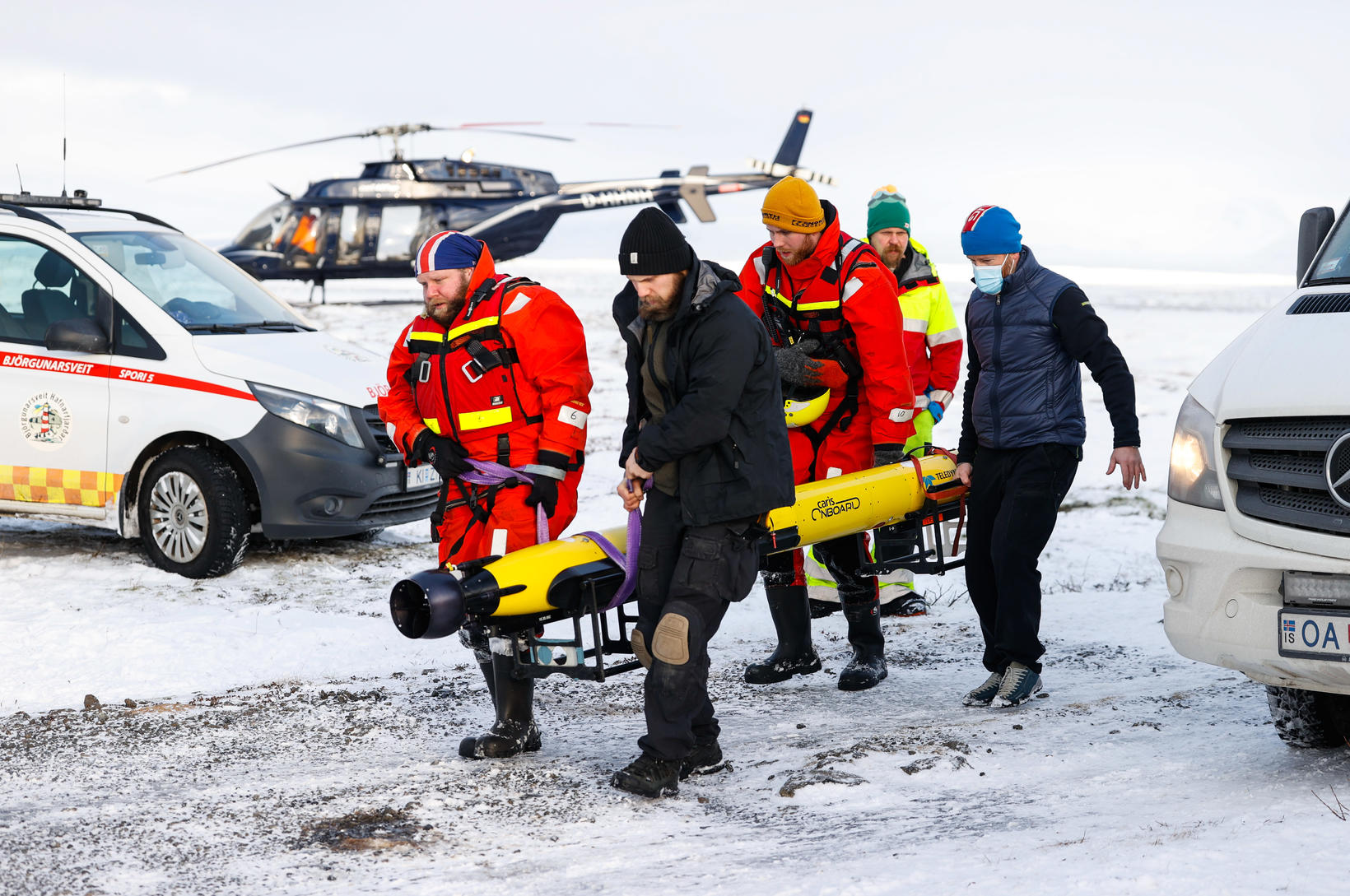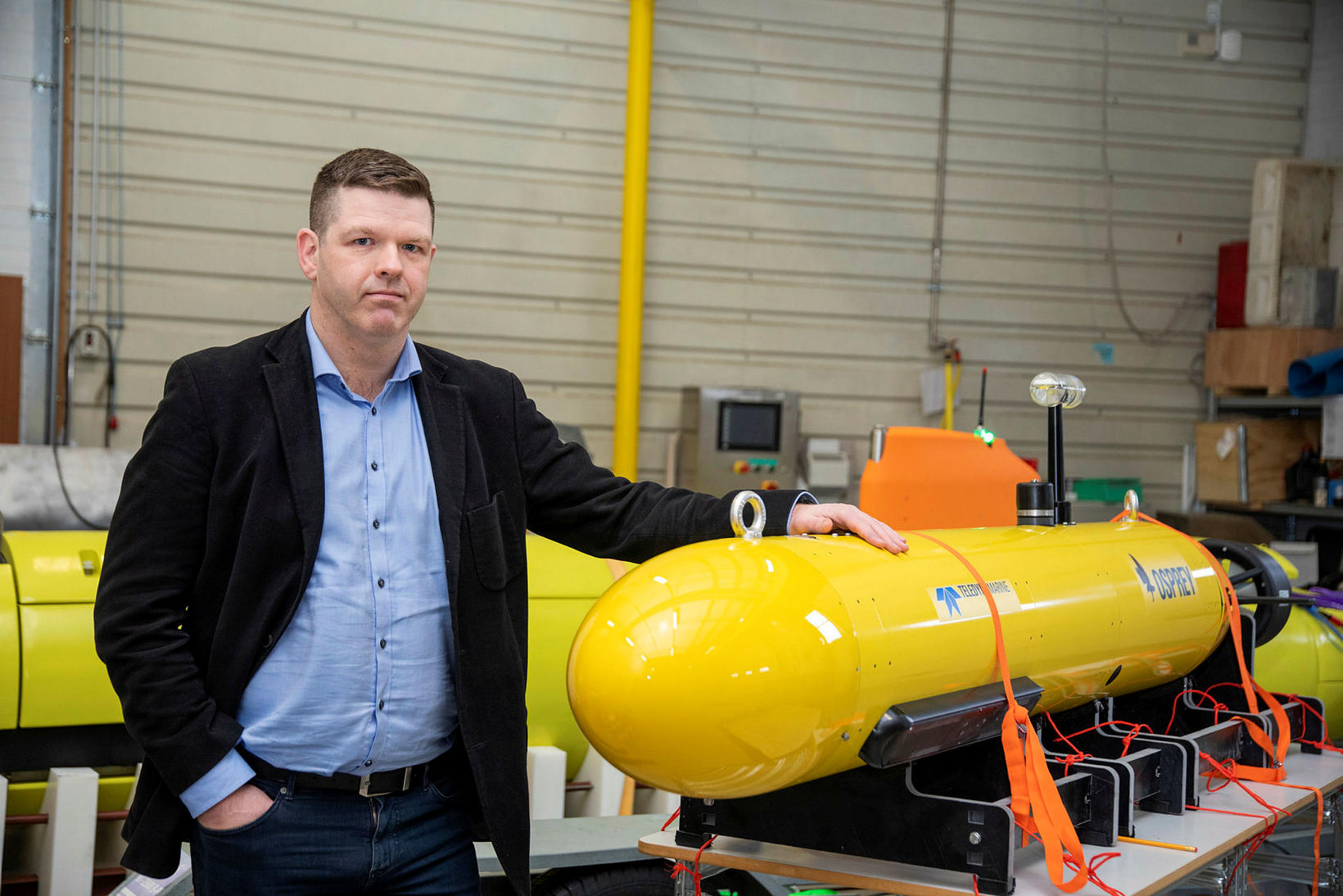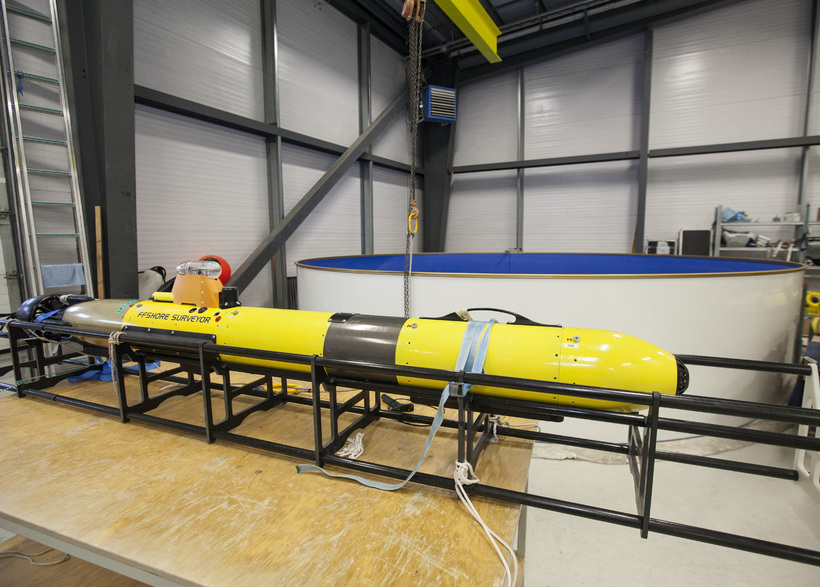Autonomous Underwater Vehicle Proved Useful in Search for Airplane
An autonomous underwater vehicle (AUV) from the AUV manufacturer Teledyne Gavia, proved useful in the search for the wreck of a plane that crashed into Þingvallavatn lake, Southwest Iceland Thursday last week.
“We program each operation for the underwater vehicle, after which it does its own thing without us having any tangible connection to it, such as a cable, or something else,” Stefán Reynisson, managing director of Teledyne Gavia in Kópavogur, just south of Reykjavík, tells Morgunblaðið.
Teledyne Gavia currently builds three types of autonomous underwater vehicles in Kópavogur. First, there is the original vehicle, Gavia, named after the Latin name for great northern diver (a.k.a. common loon), Gavia immer.
Gavia weighs 60-100 kg, depending on its equipment, and can dive down to a depth of 1,000 meters. Using one battery, it can remain submerged for about eight hours and up to 16 hours with more than one battery.
The mid-size AUV is called Osprey. Its prototype is ready, and sales are about to begin. It is much larger than Gavia and can dive to a depth of 2,000 meters. It can carry larger sensors and equipment, as well as larger batteries than the Gavia, and it can remain submerged longer. It weighs 150-400 kg, depending on its equipment. Using one battery, it can remain submerged for 12-14 hours, and for 24 hours using two.
The largest AUV is called Sea Raptor. It can dive to a depth of 6,000 meters and weighs between 1 and 1.6 tons. Equipped with one battery, it can stay underwater for up to 45 hours.
Teledyne Gavia in Kópavogur employs 25 people. In addition, the company cooperates with Icelandic machine shops that produce various parts for the AUVs.
“We’re part of the American company Teledyne Technologies, and our sales and supporting offices are abroad,” Stefán explains. “As a result, our sales reps operate on every continent. We sell the AUVs worldwide.”
The decision was made to use the Gavia AUV for the search in Þingvallavatn lake. Given the conditions there, an AUV as small as possible worked the best. A side-scan sonar was used that reaches about 100 meters to each side of the vehicle.
The AUV sailed back and forth, according to a search pattern, scanning a large area. The sonar requires water to carry sound waves, the echo of which it detects and uses to draw a clear picture of the lake bottom, regardless of whether the water is clear or murky.
If something is detected, a camera on the vehicle is equipped with a flashlight, and the spot can be covered again in order to take pictures. Their quality depends on the clearness of the water.
The Gavia AUV can carry a multibeam profiler as well, which emits up to a thousand sound signals to create a 3D picture of the lake bottom.
Stefán notes that one of the most complicated tasks regarding AUVs is their positioning equipment. For that purpose, fiber optic gyroscopes technology is used.
“Our original project was developed in 1996, and the company was created in 1999, so we’ve been developing this technology for 25 years,” Stefán states. “Our technical knowledge and development is world-class, and we’re competing with very large firms in this field. We benefit from being part of a large, international company, and can, at the same time remain a small company in Iceland, where communication is close and the communication channels are short.”




/frimg/1/38/77/1387784.jpg)





